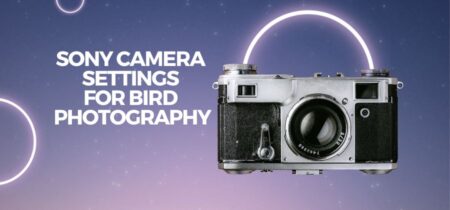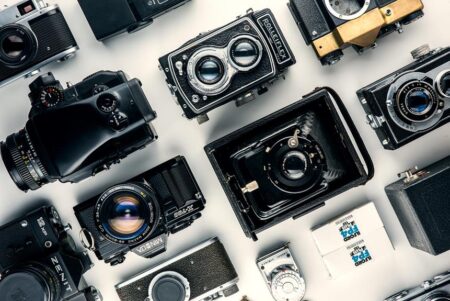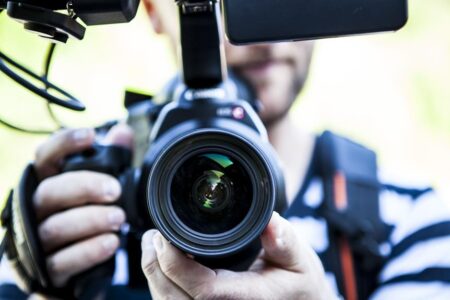You can choose from a variety of lenses that complement your camera’s focus angle and range, including ultra-wide, wide-angle, macro, and more.
However, I’ve often heard new photographers ask which one works best, a macro lens or a wide-angle lens.
This is why I will explain the difference between macro lenses and wide-angle lenses so that new photographers can choose the right one for the right job.
A macro lens versus wide angle lens differs in the following key ways:
In contrast, a wide-angle lens is designed to capture distant spaces and large compositions such as landscapes or interiors, while a macro lens allows for sharper and close-up shots.
The full article can be found below if you’d like to learn more.
wide-angle lenses.
Macro lenses
It is possible to take photos very close up with macro lenses. The term macro lens does not mean a wide-angle or telephoto lens. It simply means you can get very close to a small object. Macro lenses are never wide-angle lenses. They are usually in between wide-angle and telephoto, or moderately telephoto. Common macro lenses include the Olympus 50mm, Nikon 60mm, Nikon 105mm, Sigma 150mm, Canon 60mm, and Canon 100mm.
Wide Angle Lenses: How Do They Work?
In general, lenses with focal lengths less than 35mm are considered wide-angle lenses. The lower the focal length, the wider the lens will be, and the better the field of view.
The purpose of a wide-angle lens is to bring the whole scene into the frame.
Wide-angle lenses allow you to capture a whole building or an entire field from an extremely close spot. Normal lenses won’t allow you to do that. That’s how wide-angle lenses work.
When you see a wide-angle lens that has a focal length less than 24mm, you should consider that lens as an ultra-wide-angle lens as it will be wider. Wide-angle lenses give the perfect depth of field, so you can capture expansive landscapes and cramped interiors.
With a wide-angle lens, you can fit more and more in the frame and fit them perfectly from the closest possible photography spot, which makes them impossible to take without a wide-angle lens. Depending on your needs, you may need a wide-angle lens with a focal length of 24mm and an ultra-wide-angle lens with a focal length of 16mm.
Macro Lenses vs. Wide Angle Lenses: What’s The Difference?
Wide-angle lenses and macro lenses produce different photographic results, so it’s important to know the differences between them:
| Wide-angle lens | Macro lens |
| The wide-angle lens captures wider images with a larger field of view. | By using a macro lens, you can take close-up photos with high details without getting very close to your subject. |
| Multiple subjects can be captured in one frame. | In spite of the fact that it can only capture one subject at a time, it is capable of capturing very small details. |
| In addition to taking photos of tall buildings, a group of people, natural scenes, etc., wide-angle lenses allow you to capture greater detail. | It is possible to take photos of very small subjects with macro lenses since they are designed to take close-up shots. |
| In general, wide-angle lenses require less light to perform well because they have a larger sensor aperture. | For decent photos with macro lenses, a lot of light is required because they have smaller apertures. |
| A good sensor paired with a decent wide-angle lens can Take great nighttime photos. | Nighttime photography is not ideal with macro lenses. |
| A wide lens usually has a larger diameter than a standard lens. | Compared to other lenses, macro lenses are quite small. |
| It is not uncommon for digital cameras to support wide-angle lenses without any problems. | Proprietary hardware is required to support macro lenses. |
| Smartphones now come with wide-angle lenses, which are very common and popular these days. | Since most people don’t need to take macro photos, decent-quality macro lenses are not very popular. |
| A wide lens is ideal for the average consumer and day-to-day use. | A macro lens is generally preferred by professionals and enthusiasts alike. |
| In wide lenses, the bigger field of view can cause some distortion around the edges. | Although macro lenses do not have distortion, they can blur out a subject’s background. |
Lenses with wide angles and telephotos
Wide-angle lenses allow you to take photos of a wide area, such as an entire room of people, or a large coral reef. Telephoto lenses allow you to take photos of objects far away, like birds. These lenses can be either prime lenses or zoom lenses.
In reality, the human eye is neither wide nor telephoto. Most compact cameras are in the middle, they are not very wide, and if you zoom in, you can take photos of things that are far away, but not really small. The exception is that some compact cameras come with a 5x or 10x zoom, which is ideal for bird photography, but a 3x zoom is normal. This means the object becomes three times larger when zoomed in. In addition to wide-angle lenses, some compact cameras are also available with wider lenses.
The term mid-range lens is used to describe a lens that is in between a wide-angle and a telephoto zoom.
Fisheye and wide-angle lenses
Regular wide-angle lenses, rectilinear wide-angle lenses, and fisheye lenses are two types of wide-angle lenses. In contrast to regular wide-angle lenses, fisheye lenses are wider. For example, a 15mm fisheye lens is wider than a 15mm rectilinear lens. Here’s more on the differences between fisheye lenses and regular ones.
Frequently asked questions
Can I use a wide-angle lens for macro photography?
A full-frame camera can use a wide-angle lens with a focal length ranging from 8-35mm. Wide-angle photos tend to produce the opposite effect that you want in macro photos due to their wide field of view (up to 180 degrees).
What is a macro lens good for?
By magnifying the subject, a macro lens makes it seem larger. Macro lenses generally project a 1:1 ratio, which means the subject appears the same size as it actually is.
Is a wide-angle lens worth it?
Furthermore, wide-angle lenses provide a greater depth of field than telephoto lenses. In addition to using high aperture values, a wide-angle lens ensures that the entire landscape is sharply focused. For landscape photographers, these are three of the most important reasons to purchase a wide-angle lens.
Is it worth getting a macro lens?
With all that said, the macro lens is definitely worth considering as your next lens, as it can be used for a lot more than just macro photography. A macro lens might be the right choice for you if you wish to get started with macro photography while expanding your options with other photography genres.
Can I use macro lens for distance?
A macro lens has a magnification ratio of 1:1 (or greater), with a minimum focus distance of around 30 cm, which makes it ideal for taking sharp images of very small objects.
Can you shoot landscapes with a macro lens?
You might think that a macro lens isn’t much used for landscape, but that’s not true. As a short telephoto, a macro lens has a wide range of general applications, but its ability to focus very close is an advantage in certain circumstances, especially when the light is poor and the sky is dull.
Conclusion
Considering the fact that different lenses have different purposes, it is imperative to know and understand the differences between the two types of lenses. After reading this article regarding the differences explained between macro vs wide angle lenses, I hope you now have a better understanding of these two types.






